Much of the Western world is deindustrialising to meet ‘net zero’ emissions targets.
For example, the United Kingdom’s strong restrictions on fossil fuel energy consumption have raised energy prices, causing sharp contractions in all energy-intensive businesses.
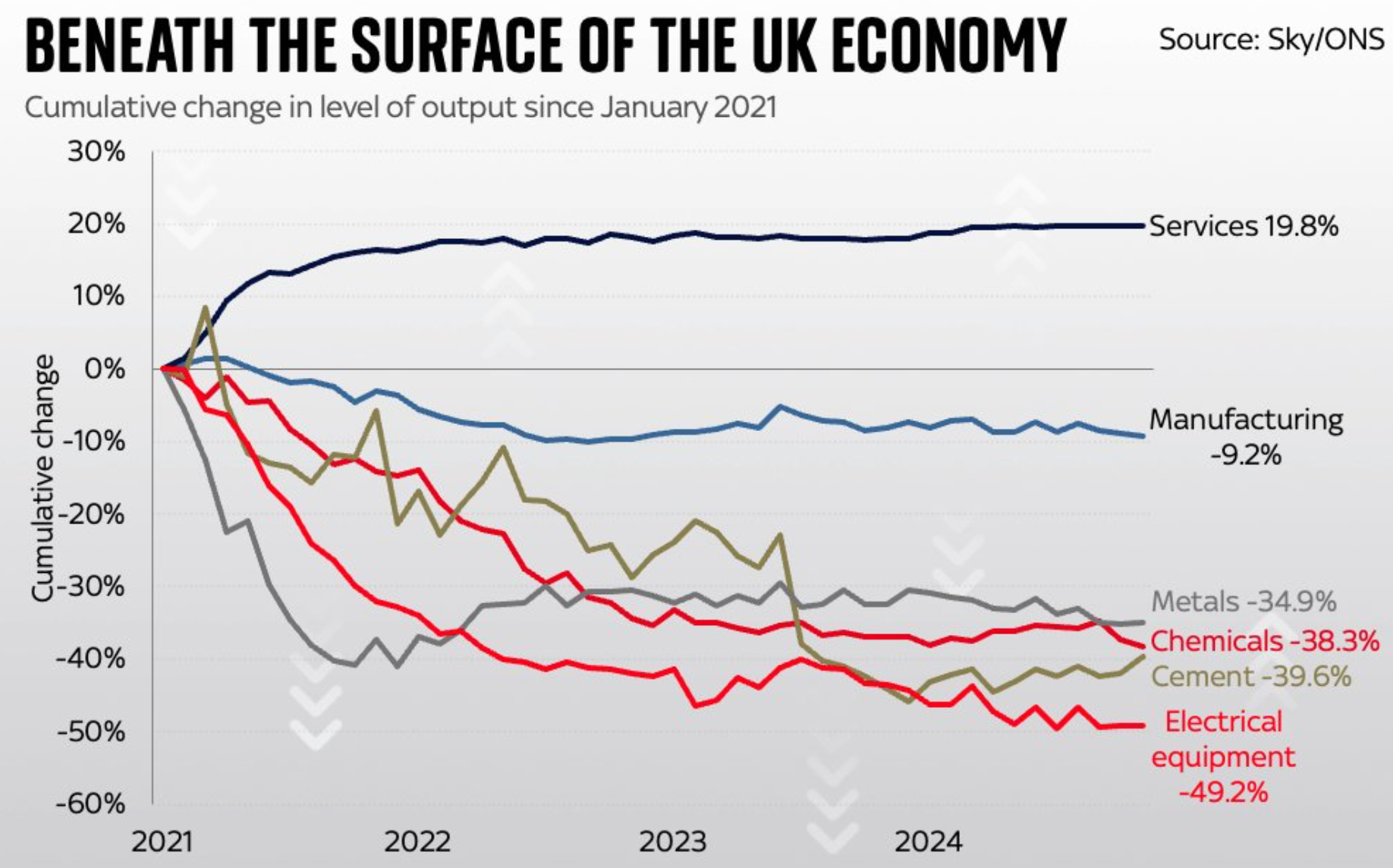
The same deindustrialisation is taking place in Germany, which has imposed similarly harsh “net zero” rules.
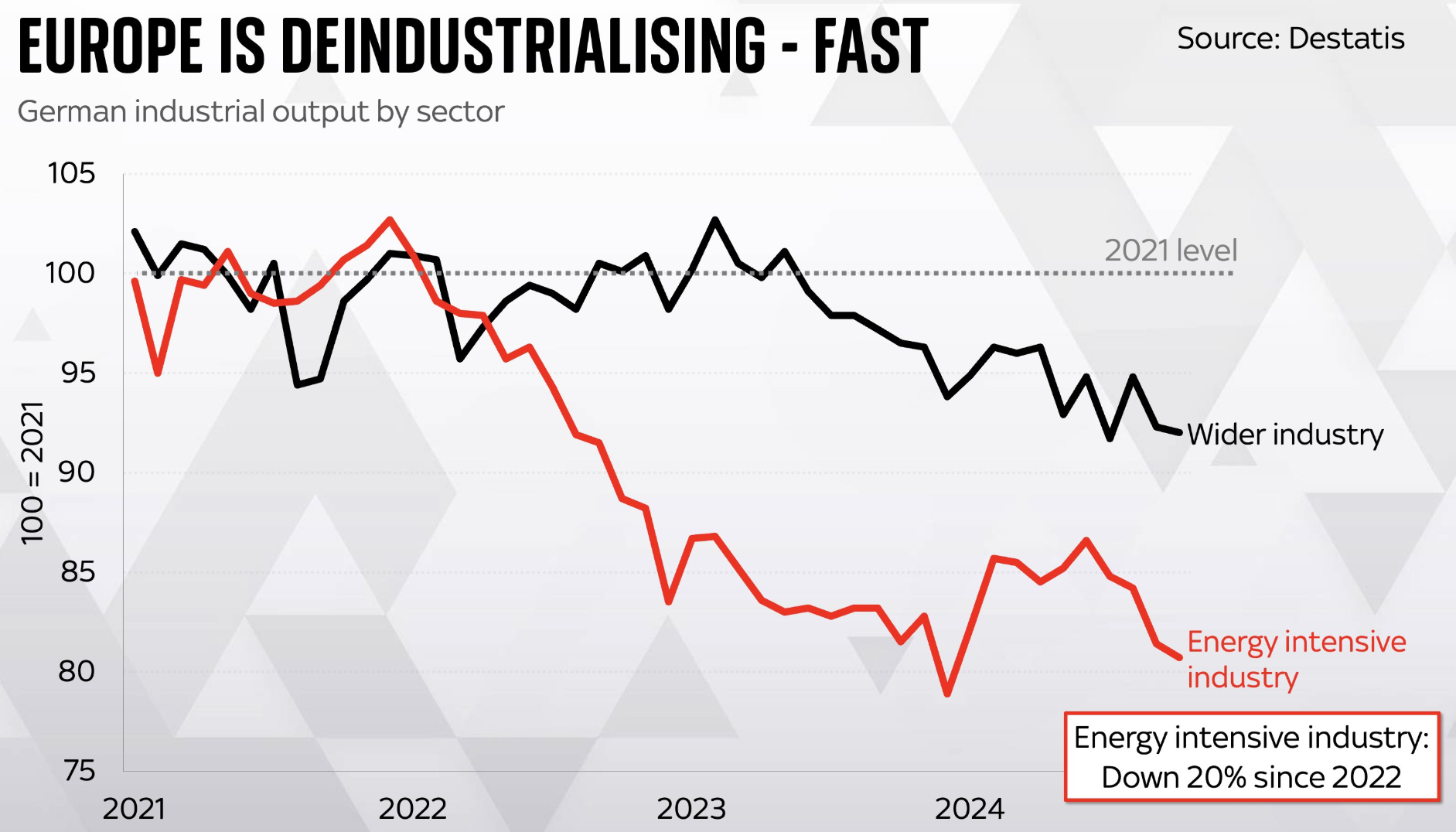
Australians are also being told that we must stop using fossil fuels such as coal and gas in order to prevent “dangerous climate change”.
As a result, Australia has closed cheap, reliable baseload power plants, resulting in rising energy costs. Ten coal fired power plants have been closed in the past decade.
These rising energy costs have contributed to the structural decline of Australia’s manufacturing industry, which is the smallest in the advanced world as a share of the economy.
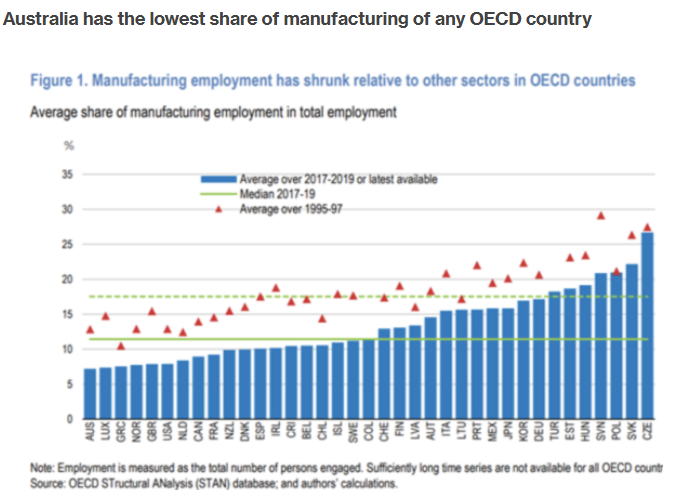
In 2022, major fertiliser producer Incitec Pivot closed its Australian operations due to high energy costs.
In 2024, Australia’s last major plastics manufacturer, Qenos, closed because of high energy costs.
This month, Australia’s only architectural glass manufacturer, Oceania Glass, collapsed after 169 years of operation. High energy costs were a cause, alongside Chinese dumping.
Bluescope Steel and explosives and fertiliser maker Orica have also signaled that they will downsize their Australian operations due to high energy costs and set up in the United States instead.
China is the most significant benefactor of the West’s “net zero” policies.
According to Our World in Data, China accounted for 31.5% of global carbon emissions in 2023, and its emissions are increasing at a nearly exponential rate.
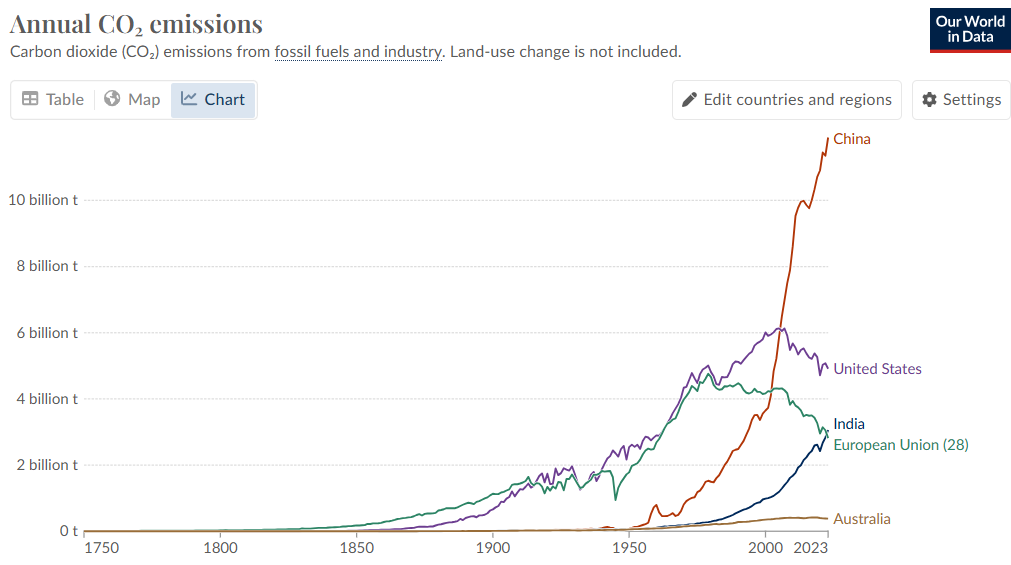
Since 2000, China has been responsible for almost two-thirds of the increase in global carbon emissions.
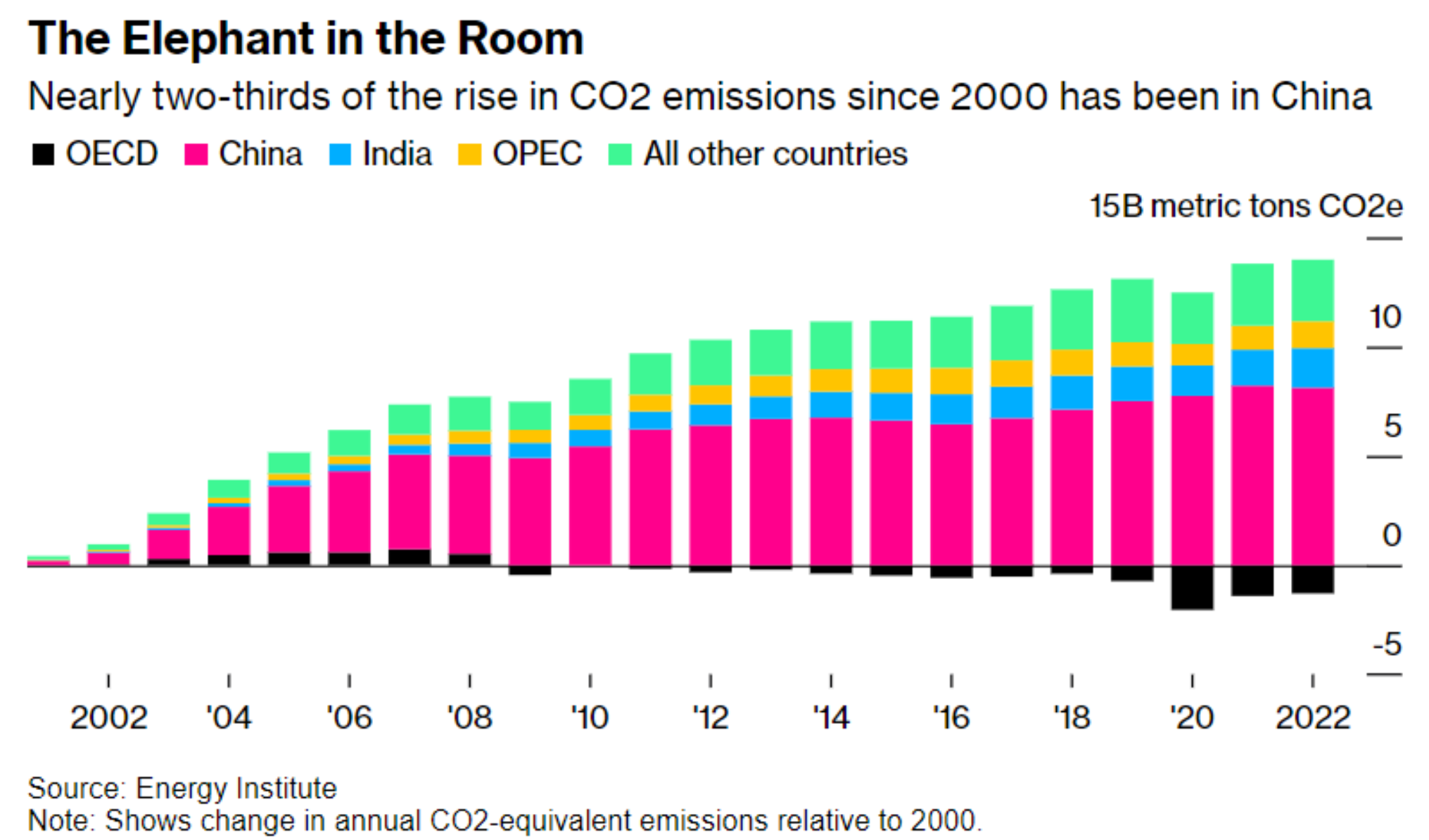
China is the world’s greatest importer of gas and coal, with much of it coming from Australia. China is also the world’s top coal producer and user.
China consumes 30% more coal than the rest of the world combined.
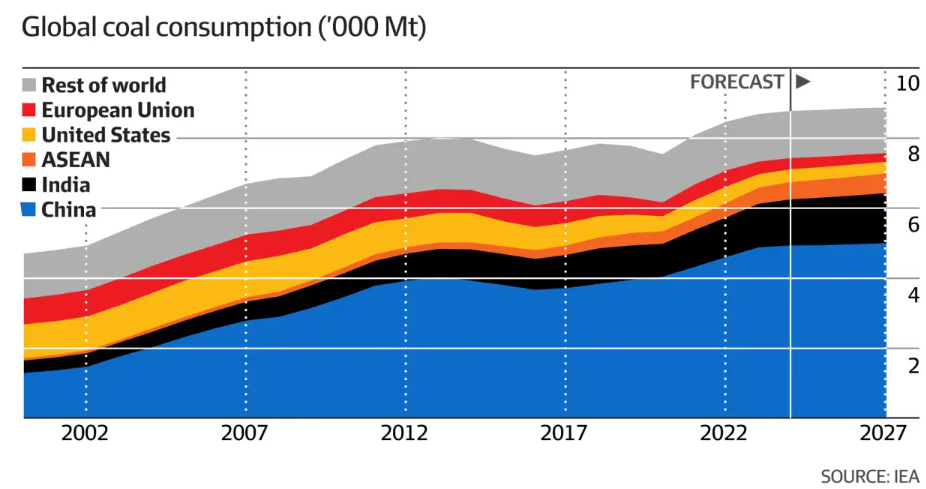
China’s thermal coal electricity generation increased by 51% in the decade to 2024, reaching a record 6,344 billion kWh.
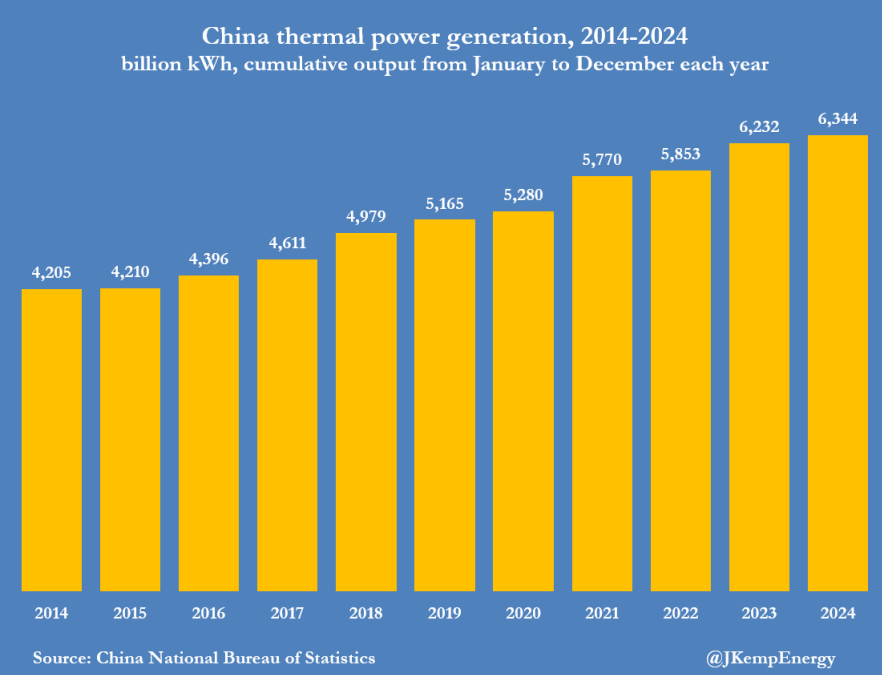
Chinese domestic coal output reached a record 4,759 million tonnes in 2024, up from 4,658 million in 2023 and 4,496 million in 2022, in response to government orders to increase inventories and assure power reliability.
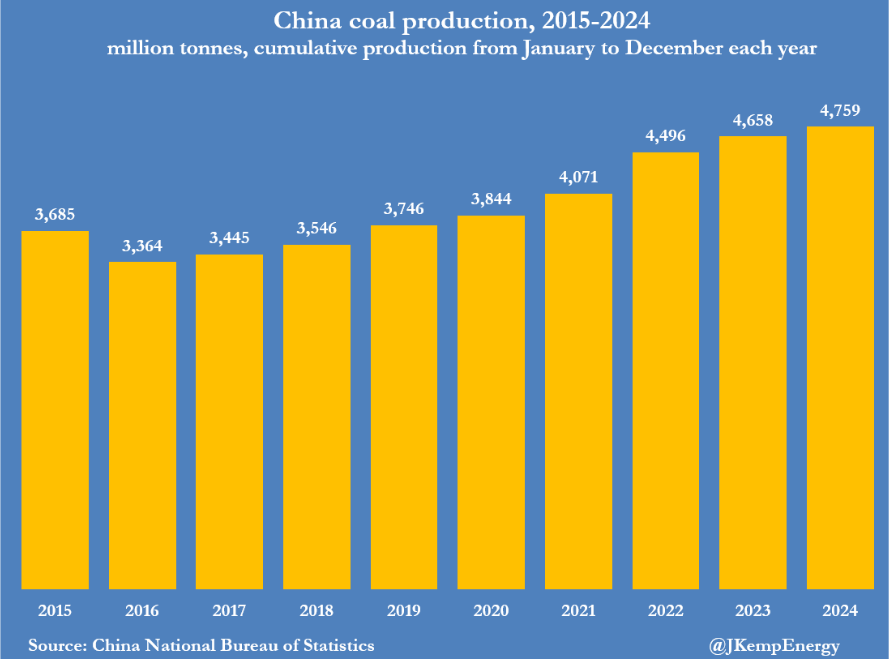
Coal imports also increased to a record 543 million tonnes from 474 million in 2023 and 293 million in 2022, ensuring that fuel supplies remained abundant.
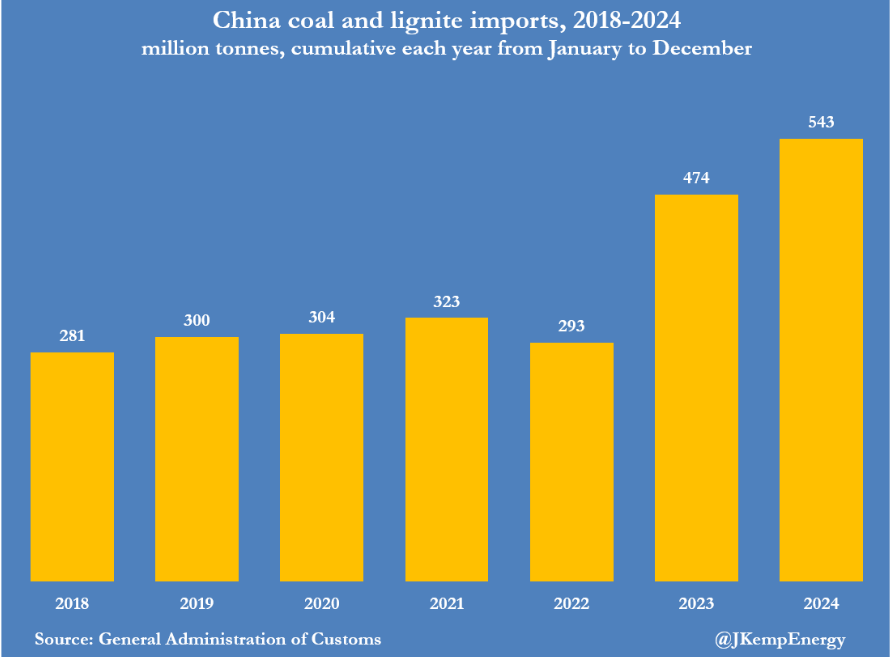
Every quarter, the Chinese government grants construction licences for additional coal-fired power plants, alongside permits for additional coal mines.
In 2024, thermal coal-fired energy generation made up two-thirds of all Chinese electrical generation.
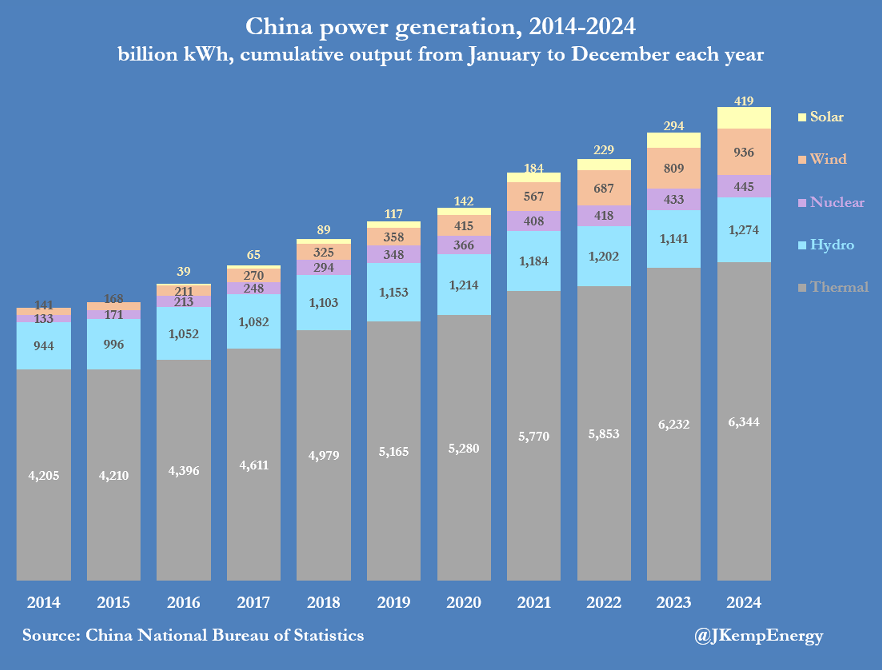
New data from Reuters’ John Kemp shows that India’s coal-fired electricity generation also hit a record high in 2024.
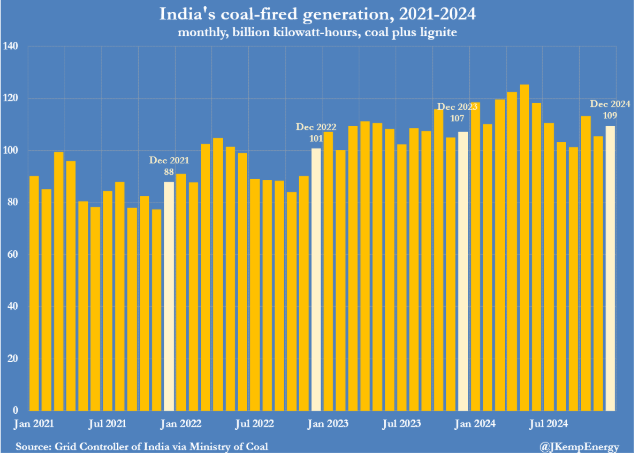
India’s coal-fired generation rose by 73% over the decade to 2023.
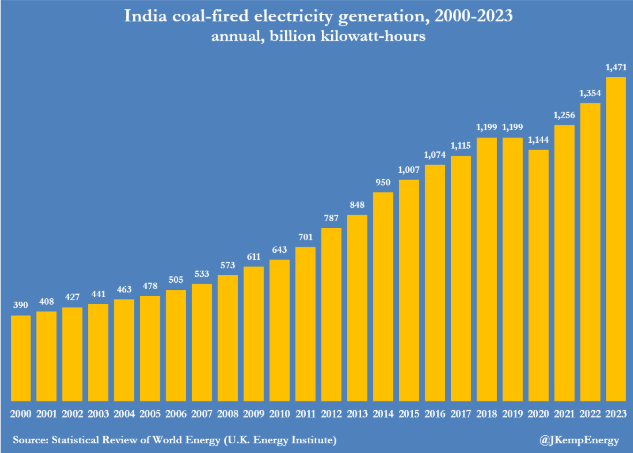
Coal still accounts for three-quarters of total Indian electricity generation and the share has increased slightly since the start of the century.
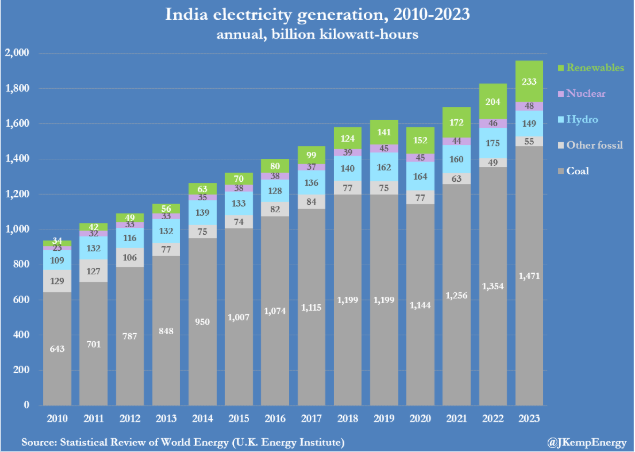
Kemp noted that the Indian government has instructed coal generators to accelerate capacity additions, delay planned retirements, and purchase more equipment to maintain and expand capacity through at least 2030.
“Renewables only made up around one-fifth of the total increase in power generation in 2024, with fossil power contributing more than two-thirds”, according to an analysis published by Global Energy Monitor.
Statista reports that China (1,161) and India (285) have the most coal-fired power plants compared to any other country.
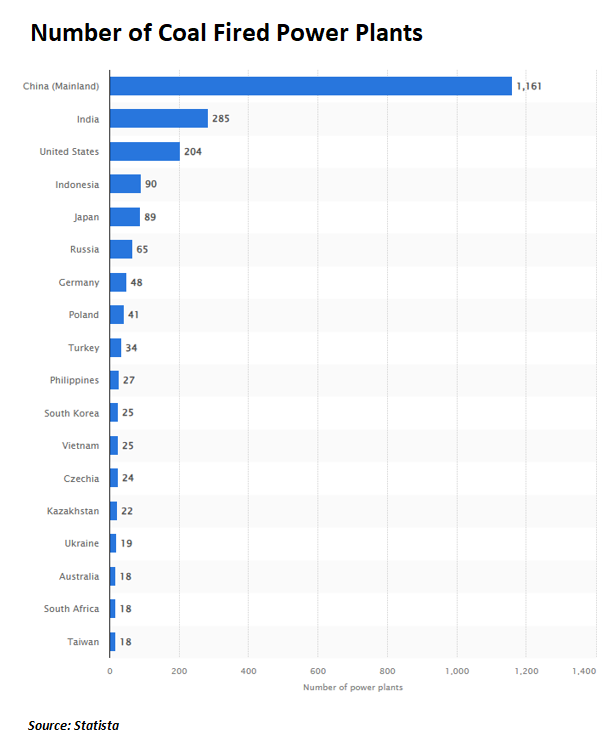
Both nations continue to add coal-fired generators and expand coal consumption.
The figures presented above demonstrate that the idea of ‘net zero’ emissions is futile without participation from China and India.
Both China and India also have looser environmental controls and standards than the West.
Therefore, it would make more sense for developed countries, like Australia, to retain their industrial capacity and burn their hydrocarbon energy at home with higher environmental controls than sending their production and fossil fuels to China and India to burn.

